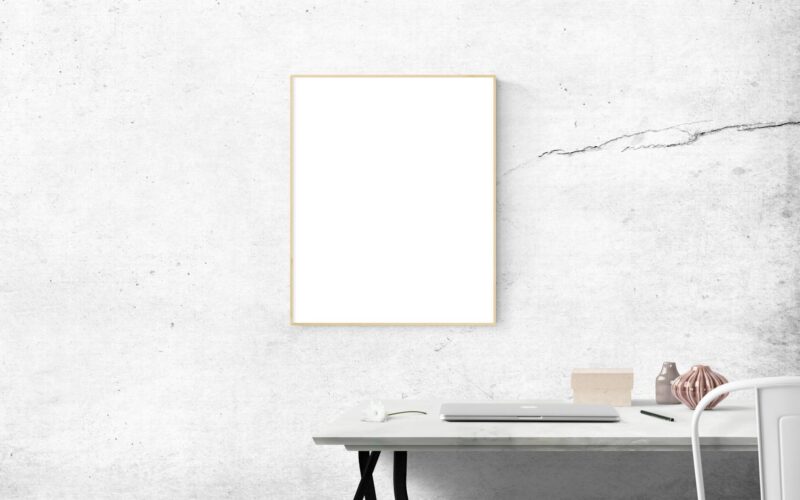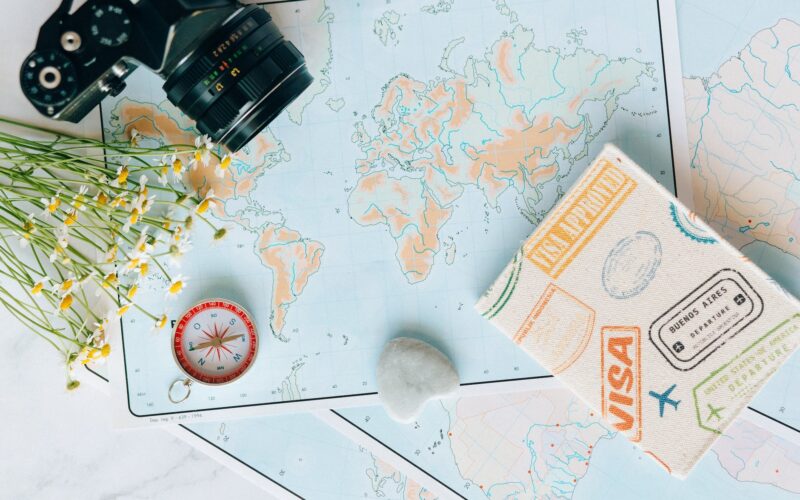Cluttered Chaos: Strategies for Decluttering Your Space and Your Mind
Living amidst clutter can affect more than just the physical environment—it can seep into our mental space as well. Understanding the connection between our surroundings and our mindset can empower us to create a more peaceful and organized life. In this article, we will delve into effective strategies for decluttering both your space and mind, enabling you to embrace a more serene lifestyle.
Understanding the Psychological Impact of Clutter
Clutter doesn’t just occupy physical space; it can also weigh heavily on your mental well-being. Research has shown that excessive clutter can lead to feelings of anxiety, stress, and even depression. When surrounded by disorganization, our brains can become overwhelmed, making it difficult to focus and find clarity. This mental clutter manifests as distractions that prevent us from being productive or enjoying our surroundings.
The connection between your environment and mental health is significant. In a clean and organized space, not only can you think more clearly, but you also experience a sense of accomplishment and control. Recognizing these impacts can be the catalyst you need to take action. When considering decluttering your space, ask yourself how various items contribute to or detract from your mental clarity. If something creates anxiety or serves no purpose, it might be time to let it go.
Creating a Decluttering Plan
Once you’ve acknowledged the psychological effects of clutter, the next step is to develop a focused decluttering plan. A well-structured plan can make the daunting task of decluttering more manageable and less overwhelming. Here are some key components of an effective decluttering strategy:
-
Set Clear Goals: Define what decluttering means to you. Are you aiming to create a minimalist environment, or just seeking to free up space? Write down specific goals to keep you motivated.
-
Break it Down: Tackle your decluttering project in sections. Start small, focusing on one room or even one area (like a desk or closet) at a time. Breaking the task into manageable chunks makes it less intimidating.
-
Time Commitment: Set a specific time frame for each decluttering session. Whether it’s 15 minutes a day or a few hours over the weekend, having a consistent schedule will help maintain your momentum.
-
Gather Supplies: Equip yourself with boxes or bags for items to keep, donate, or discard. Having your supplies ready will make the process smoother and more organized.
-
Establish a System: Identify how you will handle items being removed from your space. For example, if you plan to donate items, research local charities or organizations that can accept those goods.
By following these steps, you will cultivate an action-oriented mindset that keeps you focused and effective during your decluttering journey.
Methods for Decluttering Effectively
There are several tried-and-true methods for decluttering that can help streamline the process. Here are a few popular strategies that can guide you:
-
The “One-Year Rule”: If you haven’t used, worn, or appreciated an item in the past year, it’s likely time to part ways. This rule can help eliminate items that are merely taking up space.
-
The Four-Box Method: Label four boxes—keep, donate, trow away, and relocate. As you work through a space, assign each item to one of these categories, making decisions simple and efficient.
-
The Minimalist Approach: This method encourages you to keep only the items that you truly need or bring you joy. Gather your belongings and ask, “Does this item enhance my life?” If the answer is no, consider letting it go.
-
Digital Decluttering: Don’t forget about the digital clutter—emails, files, and apps can also contribute to mental chaos. Take time to organize your digital space, deleting or archiving what you no longer need.
-
Regular Maintenance: After a successful decluttering session, establish a routine for maintenance. Dedicate a few minutes each week to remove unnecessary items as they enter your space.
Implementing these methods will not only help you clear your physical environment but also contribute significantly to a clearer mindset.
Mindfulness Techniques for Mental Clarity
Decluttering your space is a significant first step, but to truly find peace and clarity, engaging in mindfulness practices can further enhance your mental well-being. These techniques help you become more aware of your thoughts and surroundings, allowing you to cultivate a serene mental landscape.
-
Meditation: Spend a few minutes each day meditating. Focus on your breath and observe your thoughts without judgment. This practice can train your mind to recognize and address cluttered thoughts.
-
Journaling: Take some time to journal your feelings about your surroundings and the clutter in your life. This can offer insights into why you’ve accumulated certain items and help clear mental clutter.
-
Grounding Exercises: Practice grounding techniques, such as focusing on the five senses. Notice what you can see, hear, smell, touch, and taste. Grounding can help reduce anxiety by bringing you into the present moment.
-
Declutter Rituals: Create rituals around decluttering that include mindfulness, such as expressing gratitude for items before letting them go. Cultivating this sense of appreciation enhances your emotional relationship with your belongings.
-
Breath Work: Incorporate breathwork into your decluttering sessions. Take deep breaths as you sort through items, which can calm your mind and help you make better decisions.
Integrating mindfulness techniques not only supports the physical act of decluttering but also nurtures emotional well-being, creating a harmonious balance.
Sustaining a Decluttered Lifestyle
Decluttering is not a one-off task; it’s an ongoing journey that requires commitment and mindfulness. Developing habits that reinforce your decluttered space and mind is essential for long-term success. Here are some strategies to help maintain your newfound clarity:
-
The “One In, One Out” Rule: For every new item that enters your space, consider removing one. This practice keeps clutter at bay and encourages mindful consumption.
-
Monthly Reviews: Dedicate time each month to assess your space. Look for items that no longer serve you and take steps to declutter, ensuring your environment remains inspiring and functional.
-
Practice Gratitude: Regularly express gratitude for your belongings and your living space. This mindset can reinforce the value of what you have and reduce the urge to acquire unnecessary items.
-
Set Boundaries: Establish clear boundaries with yourself regarding what belongs in your space. Limit temporary items, especially those that might otherwise accumulate as clutter.
-
Build a Support System: Share your decluttering goals with friends or family. Having an accountability partner can motivate you to stay committed to maintaining a clutter-free lifestyle.
Through sustained effort and intentional living, you can create a balanced and peaceful environment that nurtures both your physical and mental well-being.
The Benefits of Minimalism
Minimalism is more than just an aesthetic; it is a lifestyle choice that emphasizes simplicity and intentionality. Embracing minimalism can dramatically transform your life by reducing distractions and making room for what truly matters. One fundamental benefit of minimalism is improved mental clarity. By removing excess items, you create a serene environment where your mind can focus on important tasks rather than being overwhelmed by clutter.
In addition, minimalism can lead to enhanced financial well-being. By reducing the desire for material possessions, you can shift your focus from buying to saving, allowing you to invest in experiences rather than things. Ultimately, minimalism fosters a mindset of gratitude and satisfaction, leading to a happier, more fulfilling life.
The Role of Organization Tools in Decluttering
In the journey toward an organized life, utilizing the right organizational tools can make a significant difference. Tools such as labels, shelving units, drawer organizers, and file systems help streamline the decluttering process. These tools maintain an orderly environment and ensure that every item has a designated place, making it easier to find what you need.
Moreover, technology can play a substantial role in organization. Apps designed for task management and inventory can help you keep track of what you own and what you may need to let go of. By leveraging various organization tools, you set yourself up for long-term success, transforming your living space into a functional and harmonious environment.
Understanding Attachment and Letting Go
One of the most challenging aspects of decluttering is confronting the emotional attachment we often have to possessions. Understanding the psychology behind this attachment can facilitate the process of letting go. Many items we hold on to represent memories, relationships, or a sense of identity. Acknowledging these feelings is crucial, and giving yourself permission to mourn the loss of an item can make the decluttering process easier.
Encouragingly, many individuals report feeling lighter and more liberated after letting go of items that no longer serve them, hinting that the release of physical clutter can also ground us more firmly in the present.
Creating a Decluttering Community
Engaging in decluttering doesn’t have to be a solitary endeavor; it can be even more rewarding when done within a community. By sharing your goals and experiences with others, you create a supportive environment that encourages accountability and motivation. Properly organized decluttering groups or clubs can serve as gatherings where members inspire one another, share tips, and even help each other through the process.
Participating in community decluttering initiatives not only benefits individuals but also fosters a culture of conscientious consumption. Encouraging group events can make decluttering a fun and social activity, transforming it from a chore into a celebration of new beginnings.
Incorporating Sustainable Practices into Decluttering
As you declutter, consider incorporating sustainability into your practices. Sustainable decluttering means not just throwing items away but also thinking about how you can repurpose, recycle, or donate items responsibly. This approach reduces waste and gives your belongings a second life. By seeking local charities or online platforms to donate, you support the circular economy and contribute positively to your community.
Moreover, mindfulness about sustainability prompts individuals to consider how they acquire new items, leading to more thoughtful consumption. By fostering a relationship with your belongings that is both respectful and responsible, you make conscious choices contributing to the well-being of the planet as well as your mental health.
Summary
Living amidst clutter can significantly impact our mental well-being, leading to anxiety, stress, and a lack of clarity. By recognizing the profound connection between our environments and our mental health, we can motivate ourselves to create a more serene existence. Decluttering is not merely a physical activity; it also requires an understanding of the emotional attachments we have to possessions. Various methods and mindfulness techniques can facilitate this journey, allowing us to not only clear our spaces but also nurture our mental states. Additionally, establishing habits that sustain a clutter-free lifestyle, such as utilizing organizational tools and engaging with communities, enhances our commitment to a more balanced life.
Embracing the journey of decluttering empowers us to cultivate a peaceful and intentional life, unburdened by the weight of excess.
#Cluttered #Chaos #Strategies #Decluttering #Space #Mind
















